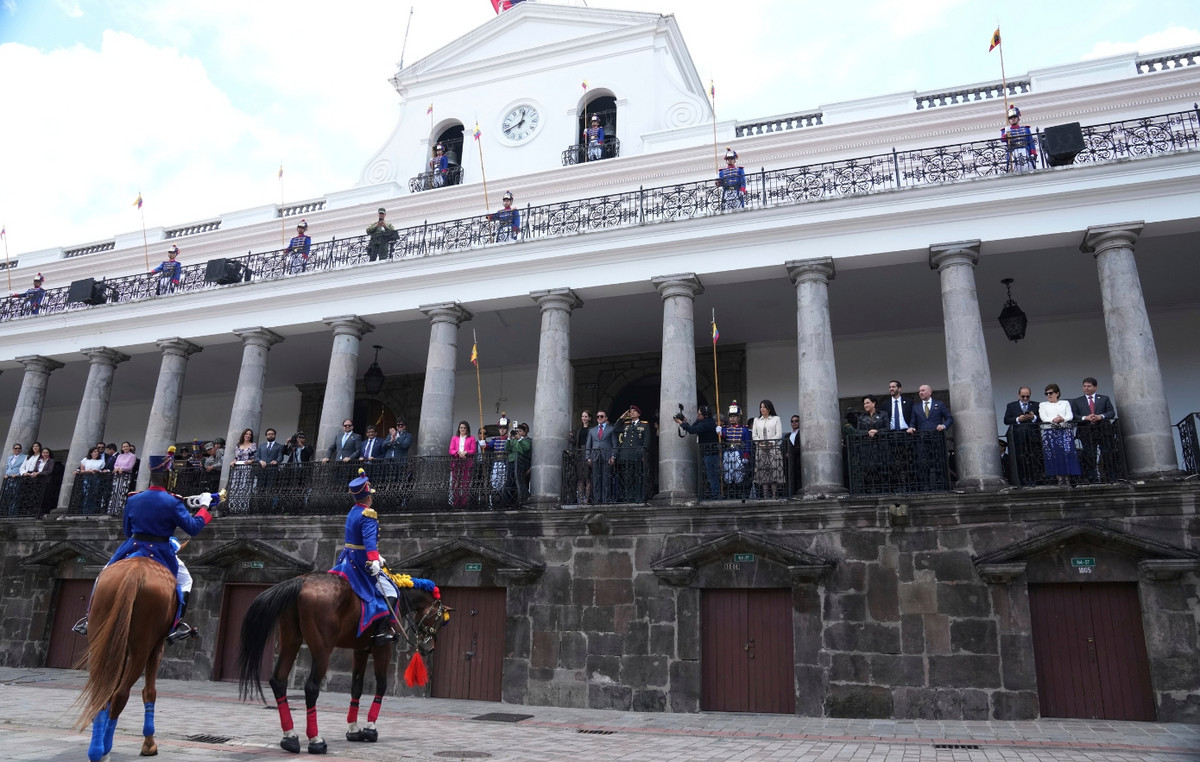In 1941, the city of Porto Alegre was hit by a major flood, which left 70,000 people homeless and a third of commercial and industrial establishments underwater for around 40 days.
At the time, the level of Lake Guaíba reached a height of between 4.75 and 4.76 meters. To give you an idea, the alert level for Guaíba is 2.5 meters, while the flood level is 3 meters.
After the historic flood, the municipality began planning to create a system that could protect the city against major floods. The set of works, however, only came to fruition in the 1940s – around 30 years after the events of 1941.
The system is made up of the Mauá Wall, 14 floodgates, 68 kilometers of dikes and 19 pump houses.
Although the capital of Rio Grande do Sul recorded the worst flood in its history this year, experts believe that, without this protection system, the effects would be even more devastating.
How the flood protection system works
Mauá Wall
One of the works that gained the most notoriety was the so-called Muro da Mauá. It is a 2.6 kilometer long wall that is on the banks of the Guaíba and runs from the port to Avenida Mauá, in the central region. The wall is 3 meters high from ground level.
According to the city hall, the wall is made of reinforced concrete and is “responsible for protecting some of the main public facilities in the central area, such as the City Hall, the Post and Telegraph building, the State Finance Secretariat, the Rio Art Museum Grande do Sul, among others”.
“Without the Mauá Wall, which represents 4% of the length of the protective dikes, in the event of a flood, the waters that arrive through the tributaries and are removed from the city through the pump houses and penstocks would return to Guaíba through the gap left through the Wall, flooding the central region of the city”, says the municipal administration.

Floodgates of the Mauá Wall
The Mauá Wall has, along its entire length, 14 protective floodgates. These floodgates are like gates, which are closed by municipal authorities when there is an indication that the Guaíba will rise above the safety level.

Last week, one of the Guaíba floodgates – gate 14 – broke and put the population of the north of Porto Alegre at risk. Since the start of the current flood, the city hall has had to improvise with sandbags behind the floodgates to help contain the force of the water. In some places, even Army tanks were targeted.
Shortly after informing the press about the failure of gate 14, the general director of the Municipal Department of Water and Sewage (Dmae), Maurício Loss stated that he “does not see a problem” with the wall located at Cais Mauá. “But the gates may have problems. So much so that Army tanks are arriving to shore it up,” he admitted.
According to Loss, the wall “was created with the engineering and structure that was available” at the time of construction, in the 1960s. “And it served very well. But we are going through a historic moment in Rio Grande do Sul”, he comments.
“The wall is what reassures us the most. Our problem is, in fact, the gates: they are smaller water inlets, but of course this can cause a lot of damage. But, in a way, it has been meeting needs.”

Dikes
The flood protection system in Porto Alegre includes 68 kilometers of dikes. Dikes are structures that function as reservoirs, which contain water to prevent flooding in the city.
This system is interconnected with the pump houses that are spread across the capital of Rio Grande do Sul.
Pump houses
The city has 23 pump houses. This equipment works in partnership with the dikes, draining water in the lower regions of the municipality and taking it back to Guaíba.
The problem is that, this year, due to the large volume of water, the pump houses were unable to meet the demand. According to the city hall, of the 23 stations, 19 had to be shut down due to flooding and the risk of electric shock.
This Thursday (9), the Municipal Department of Water and Sewage (Dmae) reported that it is working to restore the functioning of the sixth pump house that had to be turned off.
Last week, the general director of Dmae had already said that the pump houses were “reaching their limits”.
Pump houses were not designed to work so many days. The engines cannot handle working for so many days uninterruptedly. They overheat, they have power outages. But our team has spared no effort to be there and make the corrections to act.”

Source: CNN Brasil
I’m James Harper, a highly experienced and accomplished news writer for World Stock Market. I have been writing in the Politics section of the website for over five years, providing readers with up-to-date and insightful information about current events in politics. My work is widely read and respected by many industry professionals as well as laymen.







